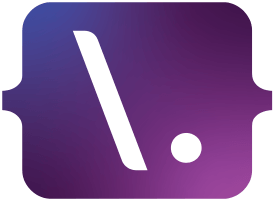
Issue 308
7th July 2017
Written by Dave Verwer
Sponsored Link
Lokalise with iOS translation SDK for real-time testing and instant updatesLokalise is a web-based multiplatform editor where you store, edit and translate strings yourselves or with our pro translators. Used by companies like Shopify, MSQRD, Mom.life and thousands of others, the service lets you push your text strings to mobile users instantly without re-submitting your apps to the AppStore. The API/CLI tool and other integration options are included. Join now!
News
New stuff from WWDC 2017How could anyone remember everything Apple announced at WWDC? Luckily, we don’t have to, because Kuba Suder composed this detailed list of all the important announcements. He starts with the user-facing features but quickly moves on to developer and framework changes. He also has lists from the last two years to look at if you want to compare.
The Future of Teaching With Swift Playgrounds
Education has always been a top priority for Apple and of course it continues today with iPad and the Swift Playgrounds app. Alex Repty takes a look at the current state, and the future of Swift on the iPad and shows what a promising future it has. On the same subject, I also enjoyed Fraser Speirs’ recently published article on his experiences teaching Swift over the last year too.
Code
Safe Area Layout GuideiOS 11’s Safe Area is a significant change to how we declare out user interfaces with Auto Layout. This article helps clarify what these changes will look like whether you use storyboards or code, and how to what extent you need to worry about backwards compatibility.
Key Value Observation in iOS 11
One of the biggest features in Swift 4 that hasn’t gotten a whole lot of attention is support for strongly-typed KVO. Skye Freeman points out a few interesting and important changes that come along with this change.
LGButton
LGButton takes away many of the pains in customizing button controls. Instead of playing around with layout constraints, custom views and CGLayers, drop this IBDesignable, fully-customizable control into Interface Builder and design it as you wish.
ZIP Foundation
Managing ZIP files has never been a breeze for iOS users or developers. This Swift wrapper around Apple’s libcompression makes compressing and decompressing ZIPs easier than ever, and can even be used on Linux.
Design
Design Better FormsForms are pretty ubiquitous, but there are dozens of ways to mess them up. Andrew Coyle provides a list of common design flaws in forms and simple ways to correct them and improve user experience.
Red, White, and Blue
Nick Babich with eight rules to follow when it comes to picking color schemes in user interface design. These tips are easy to follow, but they can come a long way in improving how your users interact with your apps.
Business and Marketing
What Your Career Wants to BeThis blog post is more than just an introduction to the Bluejay framework. It discusses how you should be willing to try different things and take on challenges you are not entirely comfortable with. For Allen Pike’s company, working on a Bluetooth app taught them niche skills that have opened up many more doors to them.
How Often Should You Update Your App?
Stuart Hall with an interesting analysis of app update frequency from the top-charting apps. The paid apps may be more worthwhile to look at if you work independently or with a small team, because the top free apps are predominantly made up of big corporations. Unfortunately, based on the numbers there doesn’t appear to be a single “right” approach to releasing app updates.
Videos
Dealing With Asynchrony in a Synchronous Swift WorldGreg Heo discussing different approaches to asynchronous behavior in Swift. An interesting point he brings up is that asynchronous tasks often have interrelated code that’s written in different places, much like delegate methods or selectors. The methods he discusses keep all the code in a single place to make it easier to write and maintain.
Sponsored Jobs
iOS Developer @ Komoot, RemoteJoin Europe’s most successful cycling and hiking app and change the way people explore!
Senior iOS Developer @ Asana Rebel, Berlin
Have an impact on million of users, join our young, motivated iOS team.
iOS Developers and Tech Lead @ Hotels.com in London, UK
Travel and tech. Swift and speed. Solving at scale. Join Hotels.com - voted best place to work in the UK.
And finally...
Life of an iOS EngineerSo relatable 😂
